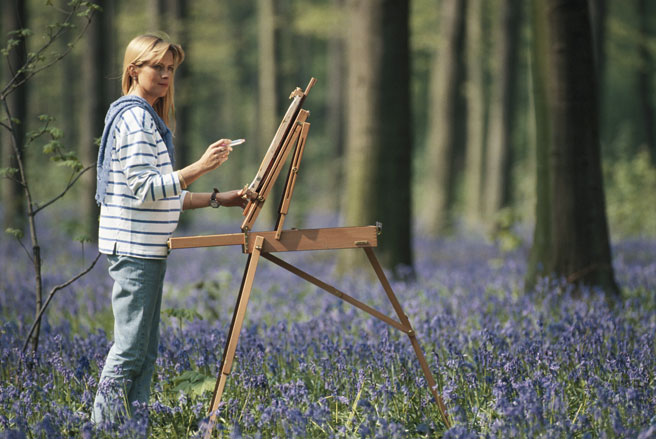How to live a meaningful life
By becoming more aware of the world around us and making small changes to our routine, we can transform our state of mind and our lives, says Tanis Taylor

Have you ever attended a meeting where everyone breaks for lunch, and then returns to sit in exactly the same spot? After just a week of living in a new place we will instinctively sit in one particular chair, sleep on the same side of the bed and take the same route to work. Going through the motions gives our mind space to pursue other things. But it also allows our brain to become preoccupied with worry or ask the same question twice. Our concentration can be so good at playing truant we barely register its absence. Are you really reading this now? Or are you calculating how many chops you’ll need for tonight’s dinner now your son has wandered through the door? With so much to absorb, so much to do, we learn to find shortcuts and become, necessarily, less attentive to the world around us. But when we do take the time to become more aware, we become more efficient and creative and are able to turn life’s more mundane moments into exciting experiences.
In 1976, Harvard psychologist Ellen Langer and a group of graduate students placed a newspaper ad calling for male subjects aged 70 or older for a week-long experiment. The psychologists took them to a country retreat where they had recreated the year 1959. The men listened to music and watched films and ball games from the time. By the end of the week, they found that the men looked younger and stood straighter, their hearing had improved, as had their mental acuity and psychological functioning. Being in a mindful environment had allowed them to ‘backtrack’ 20 years. If ever there was a time to wrest back the controls, it is now. After 15 years of prosperity, the new mood has forced us to take stock. With credit crunches and job cuts it is precisely that mental agility and novel thinking that will help us find inventive, creative solutions through the turbulence and help frame the credit crunch not as a recession, but a renaissance.
‘Each of us has the potential for such a renaissance,’ says Langer. ‘It requires one thing alone — just to notice. It’s this process of noticing new things that makes you feel alive.’ Realising we have been asleep — becoming aware of our limiting behaviours — is the first hurdle. Waking up is easier to do. Start small, says Patti Digh, author of 'Life Is A Verb'. There is no 25-point strategic plan for mindfulness. It is simply a tweaking of your everyday antennae to notice different things. ‘Big changes are not sustainable,' she says. 'It can be frustrating to be told that the way to wake up your mind is meditation if you’re a mother of three toddlers who can’t make the time.’ It’s about starting local, recovering the mysterious in the car park, the supermarket queue, the work canteen. ‘We are living in uncertain times and when we are uncertain we stay tuned in,’ says Langer. ‘It’s the perfect aperture for mindfulness. Recent events have startled us from our reverie, forced us to take stock, take responsibility. We can choose to remain rigid, to fight change, to stay the same and wait for scripts to resume. Or we can rub our eyes, reframe our reality and step out into horizons new with a “Wow, would you look at that”.’
How to wake up your life
1. Cultivate attention
‘The moment we give close attention to anything, even a blade of grass,’ said the novelist Henry Miller, ‘it becomes a mysterious, magnificent world in itself.’
• Go into a nearby park and find a leaf. • Study your leaf for five minutes.
• Put it away so you can’t see it and write a description of it for five minutes.
• Describe every detail you recall.
• Look at your leaf again before putting it back in the park.
• Could you find it again based on your description?
• You can apply this ‘leaf attention’ to anything to increase your sense of wonder.
2. Change your view of yourself
Mindless behaviours leave us prone to a single-minded, narrow self-image. A woman defines herself as ‘just’ a housewife, or ‘just’ an administrator and in doing so ascribes more importance to the house or the job. But if she lost the house, or the job, who would she be then? This exercise will help broaden your view of yourself and could reveal a side you never thought you had.
• For five minutes write a description of yourself.
• Stop. Cross that one out.
• Set the timer for three more minutes and describe yourself again without using anything from the first description.
• Stop. Cross that one out.
• Set the timer for three more minutes and describe yourself again without using anything from the first two descriptions.
• Now you’re finally getting to the you that’s beneath all that other stuff.
In this last description, you might find the real you, the one beneath all those labels and qualifications and achievements. Getting to that you might help you set different, more real goals.
3. Focus
We live in an attention-deficit society — overwhelmed by information, in abeyance to technology. This makes the temptation to multi-task great, and it can be difficult to attend to things individually. Today, for one hour, imagine that you can only do one thing at a time. If you are drinking coffee you can’t check email. If you are talking to your neighbour you can’t be folding laundry. If you’re eating you can’t be reading. For three minutes write about your experience of doing one thing at a time. How did it feel? For the next three minutes answer this: what do I lose or miss out on when I multi-task?
4. Boost creativity
To be mindless is to be outcome-oriented. To be mindful is to relish the process rather than the outcome. ‘Reverse thinking boosts creativity by freeing you from outcome expectations,’ says Patti Digh. ‘You can use it every day in some way — whether helping your kids figure out how to do something by reverse-designing it (how could we really muck up this project?) or around self-image (how can I continue to feel as bad as possible about my weight?).
Sometimes by making that outlandish list of ‘don’ts’ we uncover things we are doing to sabotage our efforts. Get a blank sheet of paper. Your goal in the next two minutes is to design the best desk lamp in the world. After two minutes, reflect on the experience. Was it hard? Was there pressure from the expectation that it be the best? Start again — this time, spend two minutes designing the very worst desk lamp in the world.








